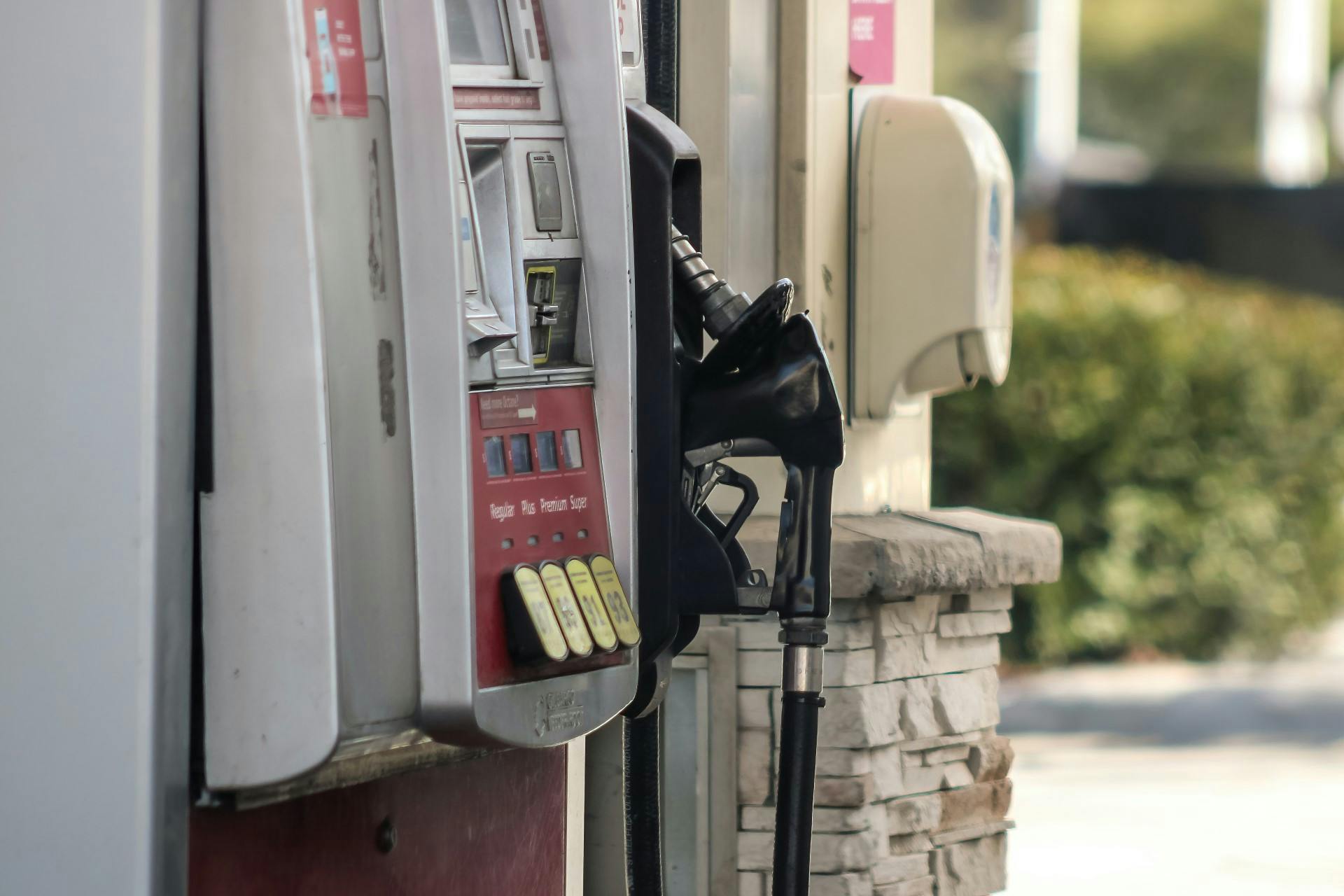
June 24, 2022
What the Ukraine crisis means for markets – and the fight against climate change
As the Ukraine crisis continues, we examine the potential implications for the global economy, the transition to net zero and what it all means for investors. With energy prices soaring and energy security coming increasingly into focus, there is no better time for the move to renewable energy – but the transition will of course come at a cost. However, we believe the road to net zero could present a myriad of potential new opportunities for investors – and a more sustainable future is critical if we are to achieve long-term economic growth and financial returns.
13 minutes
Original Content: AXA IM
What are the implications of the Ukraine crisis on the global economy? Could there be a recession?
Russia’s invasion of Ukraine has come with a terrible human cost, leading to sanctions from the West on the Russian leadership, as well as certain banks and wealthy individuals. The full economic impact, however, will be felt far more widely. The World Bank labelled the war a catastrophe
which will damage economic growth.1 It said the conflict would have far-reaching economic and social impacts – well beyond the immediate impact it is already having on the lives and livelihoods of those in the country
.2
In the wake of the invasion and rising inflation – especially regarding fuel and food – the International Monetary Fund cut its global growth forecasts. It now expects growth to slow from an estimated 6.1% in 2021 to 3.6% in 2022 and 2023; respectively 0.8 and 0.2 percentage points lower than it projected in January.3 Our own forecasts are lower still at 3% and 2.9% with central banks increasingly accelerating plans for tighter monetary policy – higher interest rates coupled with the ending/reversing of quantitative easing – despite the deteriorating growth outlook.
Financial markets and even some central bank officials are discussing recession. But much will depend on the path of the conflict from here. We expect European economies to be the most impacted and think a contraction in Eurozone GDP is likely in the second quarter of this year but not in the third. We have already seen a contraction during the first quarter in the US; and China is likely to contract in the second, in the wake of a spike in coronavirus cases, but should rebound thereafter. On balance, we think these economies will avoid technical recessions – i.e. two consecutive quarters of economic contraction – but for European economies, including the UK, we think it will be a close call.
How is the crisis affecting the global energy sector in terms of supply and prices?
Energy markets are experiencing a huge amount of volatility because of the Ukraine crisis. Russia supplies Europe with 45% of its gas and is also a large contributor of other fossil fuels (oil and coal).4 The swift and united response in implementing sanctions has contributed to higher energy prices, including the most recent partial ban on Russian oil. Yet this united response has also raised questions about the reliability of supply – this has particularly heightened as Russia recently suspended delivery of gas to Poland and Bulgaria.
For its part, the European Commission published REPowerEU – a joint European action plan for more affordable, secure and sustainable energy. The document describes the feasibility of ending Europe’s dependence on Russian gas well before the end of the decade
.5 The strategy involves a joined-up approach including diversification of gas supplies, increased energy efficiency (reducing demand), greater renewable energy generation and addressing infrastructure bottlenecks.
Our analysis suggests that in the short term, higher greenhouse gas-emitting coal-fired electricity generation could be increased to make up for the short-term drop in lower-emitting gas supply. However, our hope is the short-term negative (more fossil fuel burning) will be compensated by a long-term positive, i.e. ultimately a more rapid transition to renewable energy. Russia’s invasion also pushed the oil price above the $100-a-barrel mark for the first time in seven years – and it has climbed sharply further since.
More recently prices eased back, after US President Joe Biden ordered a record amount of reserves to be released to the market in an effort to reduce supply shortages and help curb inflation. In addition, concerns over China’s COVID-19-related growth slowdown have also prompted additional oil price pressures.
Does climate change matter right now, given the fraught geopolitical backdrop?
The world is getting warmer. This is having, and will continue to have, severe consequences for people and the planet. Climate change poses a grave risk to health, food security, and to the integrity of the global economy. The urgency for action has markedly increased as evidenced by the wave of recent extreme climate events – record temperatures in North America, wildfires across the Mediterranean and California, as well as flooding bringing devastation to parts of China and Europe.6
If the world is going to limit global warming to 1.5°C above pre-industrial levels, as set out in the 2015 Paris Agreement, global carbon emissions need to hit net zero by 2050.7 This means dramatically cutting our greenhouse gas emissions and moving the global energy sector away from fossil-based fuels, towards greener, renewable alternatives.
But this is a gargantuan challenge – as the main sources of greenhouse gas emissions include, among others, transportation (combustion engines), electricity production, industry, agriculture as well as commercial and residential properties. In February 2022, the Intergovernmental Panel on Climate Change (IPCC) released its latest assessment of the situation. The United Nations body has warned the world faces unavoidable multiple climate hazards over the next two decades
, even if global warming is successfully limited to +1.5°C. It said that even temporarily exceeding this warming level will result in additional severe impacts, some of which will be irreversible. Risks for society will increase, including to infrastructure and low-lying coastal settlements
.8
If we aren’t successful in transitioning to a low-carbon economy, we won’t have sustainable economic growth, and that means we can’t have a sustainable and prosperous future.
What’s being done about climate change?
Governments and a swathe of private companies have stepped up their efforts to tackle climate change. In November 2021 world leaders gathered in Glasgow for COP26 as they sought to secure a more sustainable future. An abundance of goals and aims were discussed but the main objective was to confirm the intention to achieve net zero by 2050, keeping the most ambitious Paris Agreement targets within reach. Disappointingly, the leaders of some of the planet’s biggest polluters were not there, but progress was still made.
The final Glasgow Climate Pact, signed by nearly 200 countries, will speed up the pace of climate action – governments are now requested to produce new Nationally Defined Contributions (NDCs) to decarbonisation, with a focus on 2030, by the time of the next COP in Sharm El-Sheikh at the end of 2022. Previously, the next publication of NDCs had been due in 2025. And for the first time, the agreement included a plan to reduce the use of fossil fuels – even though the final wording stated a commitment to phase down
coal-fired power generation – and disappointingly not phase out
, after pressure from India and China to water down the language.
In the private sector, of the world’s 2,000 largest public companies, more than one-fifth, at 21%, now have net zero commitments, representing annual sales of nearly $14trn.9 This includes companies in sectors that are the biggest contributors to global emissions – BP and Shell have both set net zero targets for example.10 On top of this, automobile makers are also transforming their product offering, with the likes of Ford and Jaguar Land Rover committing to having all-electric ranges in the next decade, as manufacturers are attempting to stay ahead of the curve and keep up with rising consumer demand.11 Notably, global electric vehicle sales hit 6.75 million units in 2021, 108% more than the previous year.12
The public policy backdrop has dramatically evolved, highlighting the strength of the commitment to net zero. For example, there are now some 2,000 laws relevant to climate change globally, up from a mere 35 in 1990.13 In addition, some 50 countries now get more than 10% of their energy from wind and solar power, according to climate think tank Ember. Solar power generation was up by 23% in 2021 and wind power was up by 14%, meaning their combined contribution to global electricity supply also exceeded 10% for the first time.14
How could the Ukraine crisis impact the transition to net zero?
As things stand, the European Union (EU) imports 90% of its gas consumption, with Russia providing around 45% of that. Russia also accounts for around 25% of oil imports and 45% of coal imports.15 Many politicians are already calling for the re-ignition of decommissioned coals plants in a bid to stave off the EU’s reliance on Russia for its energy supplies.
This sense of urgency is understandable, perhaps even necessary, but quite simply it could be disastrous for the environment if Russia’s actions were to drag fossil fuel plants back online, endangering the pace and quality of our shift to a sustainable global economy. We believe the case for the energy transition has never been greater – and that each individual proposal which serves to delay the decline of fossil fuels should be subject to the most exacting scrutiny.
Russia’s invasion of Ukraine has significantly disrupted energy markets and accelerated the EU’s ambition to reduce its dependence on Russian fossil fuels. European Commission President Ursula von der Leyen has called for urgent action to mitigate the impact of rising energy prices, diversify gas supplies and accelerate the clean energy transition.
The European Commission’s plan attempts to do just that – to make Europe independent from Russian fossil fuels well before 2030. REPowerEU will seek to diversify gas supplies, accelerate the introduction of renewable gases and replace gas in heating and power generation. The EU believes it can reduce EU demand for Russian gas by two-thirds before the end of the year.16
This moment could be an opportunity to accelerate the transition in a way that could help protect countries – and investors – from similar stress points in the years ahead. The world remains too reliant on fossil fuels to achieve a meaningful reduction in carbon dioxide emissions in the near term. High prices today for carbon-intensive energy sources should further strengthen the shift towards renewables at a time when they are benefitting from a technology-driven decline in the long-term cost curve. We must acknowledge, however, that recent events will bring short-term consequences.
How much will the energy transition cost?
The challenge of reducing greenhouse gas emissions to net zero in the coming decades is staggering and its cost significant. It requires a realignment of the global economy from the ground up – this means changes in every household, office, factory, town, city and country on the planet. As many countries have committed to more stringent emission targets, estimates of the cost of tackling climate change have been put forward.
In its 2021 World Energy Outlook, the International Energy Agency said that current plans to cut carbon emissions would fall some 60% short of their 2050 net zero target. It said to reach the net zero goal, up to $4trn in annual investment was needed over the next 10 years to close the gap.17
According to McKinsey & Company, capital spending on physical assets in the net zero transition will need to hit an average of $9.2trn per year in the run-up to 2050, around $3.5trn more than current levels. The consultancy said that spending could hit a peak equivalent to 8.8% of global GDP between 2026 and 2030 but would average out at 7.5% between 2021 and 2050 overall. Its report concludes a net zero transition will not only create immediate economic opportunities but also open up the prospect of a fundamentally transformed global economy with lower energy costs, and numerous other benefits
.18
What does it mean for investors?
The drive to net zero is hugely significant for investors. We have long championed the investment opportunities provided by the energy transition. It is even more important today, in the wake of the Ukraine crisis and the recently updated analyses on climate change, to focus on carbon reduction as an investment theme. Companies developing technologies which contribute to decarbonisation and energy efficiency should potentially benefit from the transition. Investors are finding a growing universe of green assets in which to invest.
Investment opportunities in companies which are on track to meet their net zero carbon emissions targets, which can manage their supply chains so they are at less risk from shocks and which can focus on providing equitable, flexible and well-rewarded employment is the nirvana for responsible investors. At the same time avoiding exposure to assets in countries falling short of international benchmarks in terms of human rights, diplomacy and environmental standards should be a guiding lesson of recent events.
The question we all need to ask is whether our portfolios today are aligned to a sustainable future for the planet and society, or are they contributing to further environmental degradation and social inequality? Investors need to be aware of the risks of investing in businesses that will potentially underperform because of their environmental footprint – or because of bad social and governance practices.
In terms of regulatory and policy risks investors need to bear in mind that one tool governments have at their disposal to address the impact of emissions is to increase taxation. If companies have to pay more to emit greenhouse gases, then that will hit their profitability and, subsequently, investor returns. Consumers can vote with their feet too. They can reduce demand for a company’s goods and services if it is seen to be at risk from climate change, if it is contributing to rising emissions or operating other unsustainable practices.
What investment opportunities does the energy transition present?
Given the level of investment required in terms of delivering net zero, we believe there is a myriad of potential long-term investment opportunities. Progress towards decarbonisation will increasingly determine capital allocation – and active, responsible investors are playing a key role in supporting this change. Today, investors have an ever-expanding range of green assets to invest in, including new technology being employed to help the transition to a cleaner economy. This technology, both directly and indirectly related to the energy transition, is evolving rapidly. We are already seeing fairly mature developments in solar and wind and other renewable energy sources, but they still must scale up massively to contribute fully to the fight against climate change. Some of the themes and areas which we believe are key long-term investment opportunities include:
- Renewables: Electrification is a particular area of interest to investors – from transport to heating in residential homes, to eventually some of the larger industrial processes. Alternative fuels such as hydrogen and its related technologies are very exciting – we believe there are lots of investment opportunities in that space.
- Smart energy: The rollout of renewable energy capacity continues at pace, but to reach its full potential, it needs better digital and physical infrastructure – in fact some $5.8trn of annual investment in energy supply is needed over the next 30 years to achieve net zero.19
- Transport: Investment opportunities are growing in electric car charging infrastructure, batteries, telemetry, and chips – some 66 million electric vehicle sales per year are forecast in 2040, compared to just three million in 2020.20
- Agriculture: We believe the agricultural space represents a huge possible opportunity as the energy transition drives growth in numerous areas, from the more efficient use of water, to vertical farming, and lab-grown meats. In fact, the estimated worth of the plant-based foods market in 2030 is some $162bn compared to $29.4bn in 2020.21
- Recycling: Decreasing waste and reducing the use of raw materials will become a priority as companies adopt a circular approach to business and the global electronics recycling market is forecast to hit $114bn by 2025.22
The direction of travel is clear; investors want to see change and the shift to a net-zero world will bring with it plenty of opportunities – the progress towards decarbonisation will increasingly determine capital allocation and investors are playing a key role in supporting this. Tellingly, sales of ESG-focused portfolios worldwide continued to rise in 2021. According to Morningstar data the number of sustainable funds globally reached 5,932 at the end of last year, up 11% in the last three months of 2021, from 5,330 funds in the third quarter.23
Ultimately, hitting the goals of the 2015 Paris Agreement will require a concerted and united move towards to a cleaner economy to reduce the amount of carbon we produce. There is momentum now to deliver this and we believe it will lead to a stronger and more sustainable economic future – and potentially improve long-term financial returns.
Sources:
[1] Ukraine war is economic catastrophe, warns World Bank - BBC News: https://www.bbc.co.uk/news/business-60610537
[2] The World Bank Group and Ukraine: https://www.worldbank.org/en/topic/conflict/brief/the-world-bank-group-and-ukraine
[3] World Economic Outlook (imf.org): https://www.imf.org/en/Publications/WEO
[4] How Europe can cut natural gas imports from Russia significantly within a year - News - IEA: https://www.iea.org/news/how-europe-can-cut-natural-gas-imports-from-russia-significantly-within-a-year
[5] REPowerEU_Communication_with_Annexes_EN.pdf (europa.eu): https://energy.ec.europa.eu/system/files/2022-03/REPowerEU_Communication_with_Annexes_EN.pdf
[6] Thinking beyond financial objectives when building an investment strategy: https://www.axa-im.com/insights/future-trends/sustainability/thinking-beyond-financial-objectives-when-building-investment
[7] The Paris Agreement | UNFCCC: https://unfccc.int/process-and-meetings/the-paris-agreement/the-paris-agreement
[8] Press release | Climate Change 2022: Impacts, Adaptation and Vulnerability (ipcc.ch): https://www.ipcc.ch/report/ar6/wg2/resources/press/press-release
[9] https://eciu.net/news-and-events/press-releases/2021/report-fifth-of-worlds-largest-companiesnowhavenetzerotarget / As of March 2021
[10] https://www.theguardian.com/business/2020/apr/16/shell-unveils-plans-to-become-net-zero-carbon-company-by-2050
[11] Ford to go all-electric in Europe by 2030 - BBC News: https://www.bbc.co.uk/news/business-56084500
[12] https://www.ev-volumes.com/
[13] Grantham Research Institute on Climate Change and the Environment, London School of Economics, May 2021
[14] Wind and solar generated 10% of global electricity in 2021 - a world first (weforum.org)
[15] Joint European action for more affordable, secure energy: https://ec.europa.eu/commission/presscorner/detail/en/IP_22_1511
[16] Joint European action for more affordable, secure energy : https://ec.europa.eu/commission/presscorner/detail/en/IP_22_1511
[17] World Energy Outlook 2021 – Analysis - IEA: https://www.iea.org/reports/world-energy-outlook-2021
[18] https://www.mckinsey.com/~/media/mckinsey/business functions/sustainability/our insights/the net zero transition what it would cost what it could bring/the-net-zero-transition-executive-summary.pdf
[19] BloombergNEF’s New Energy Outlook, August 2021
[20] BloombergNEF’s New Energy Outlook, August 2021
[21] Bloomberg Intelligence, August 2021
[22] Markets Research Engine, September 2021
[23] Global_ESG_Q4_2021_Flow_Report: https://assets.contentstack.io/v3/assets/blt4eb669caa7dc65b2/blt608d2560e8c97e65/61f43439df9e4f26248691ea/Global_ESG_Q4_2021_Flow_Report_
Disclaimer
This document is for informational purposes only and does not constitute investment research or financial analysis relating to transactions in financial instruments as per MIF Directive (2014/65/EU), nor does it constitute on the part of AXA Investment Managers or its affiliated companies an offer to buy or sell any investments, products or services, and should not be considered as solicitation or investment, legal or tax advice, a recommendation for an investment strategy or a personalized recommendation to buy or sell securities.
Due to its simplification, this document is partial and opinions, estimates and forecasts herein are subjective and subject to change without notice. There is no guarantee forecasts made will come to pass. Data, figures, declarations, analysis, predictions and other information in this document is provided based on our state of knowledge at the time of creation of this document. Whilst every care is taken, no representation or warranty (including liability towards third parties), express or implied, is made as to the accuracy, reliability or completeness of the information contained herein. Reliance upon information in this material is at the sole discretion of the recipient. This material does not contain sufficient information to support an investment decision.
Issued in the UK by AXA Investment Managers UK Limited, which is authorised and regulated by the Financial Conduct Authority in the UK. Registered in England and Wales No: 01431068. Registered Office: 22 Bishopsgate London EC2N 4BQ
In other jurisdictions, this document is issued by AXA Investment Managers SA’s affiliates in those countries.



